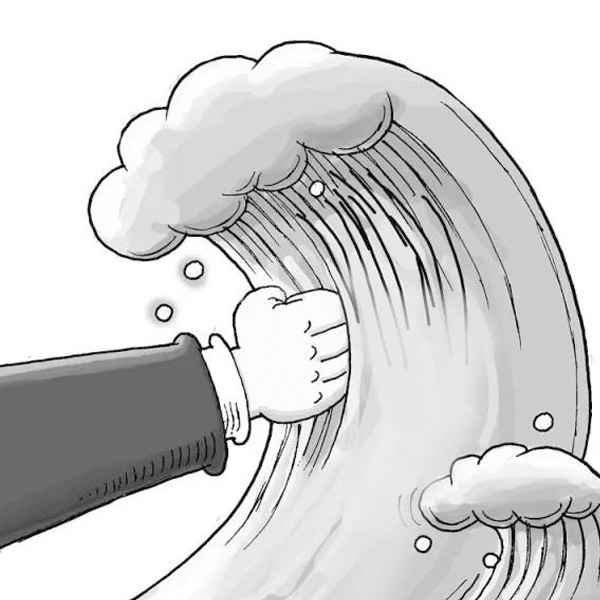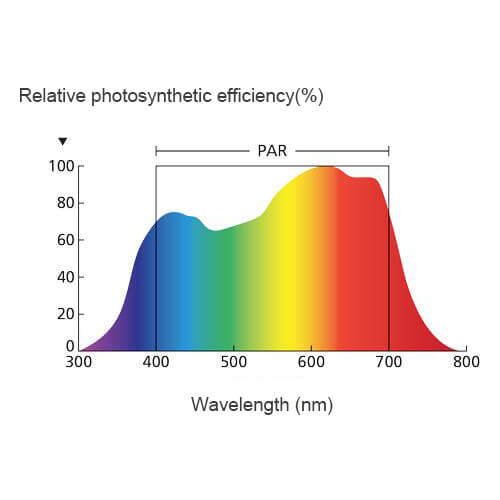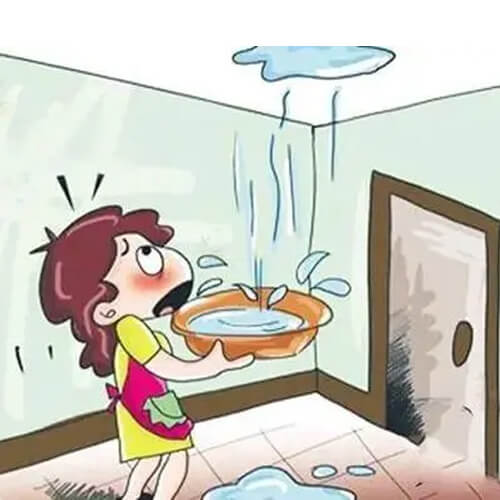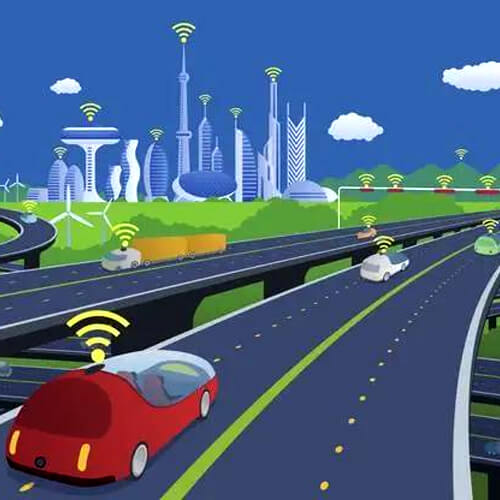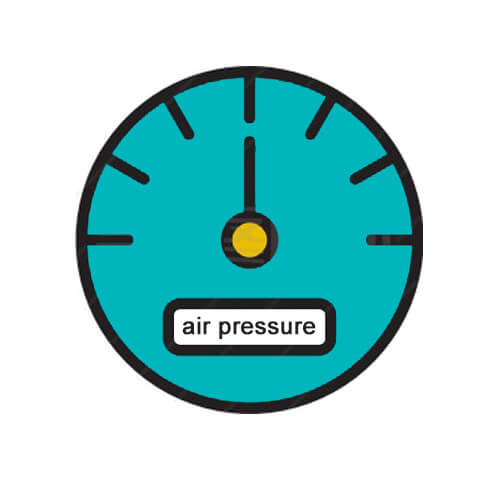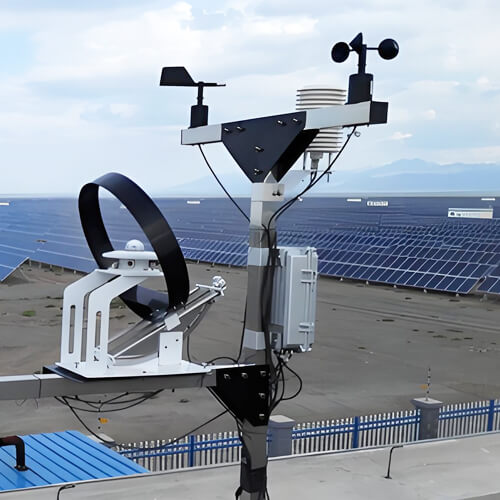Natural disasters such as floods and heavy rains pose threats to lives and property around the world. Without a proper flood monitoring system, these natural events often lead to disasters, severely affecting economic losses, social chaos, and urban environmental damage. Although IoT solutions cannot prevent flooding, real-time monitoring of data can help minimize potential damage by building proactive solutions for the community. With the help of the Internet of Things flood monitoring system, we can obtain real-time information on rainfall, how deep the water level may be, and changing conditions.
About floods
According to data from the World Resources Institute, by 2030, the number of people affected by floods in the world will double. Scientific research workers have shown that due to global warming, the southeastern United States (the territory of Tennessee) has increased by 33% in the past 60 years since 1958, and the rainfall has continued to increase in recent years. Therefore, even if there is no devastating flood in 2021, it will happen in 2022, because this is not an accidental situation, but a normalized situation.
Speaking of it, not only Tennessee but also New York City, a very large city in the United States, also entered a rare rainstorm on August 22. This rainstorm is also the heavier rainstorm in New York for 133 years.
Nowadays, affected by heavy rains, hundreds of thousands of households and companies in the southeastern and northeastern regions of the United States are experiencing power-off dilemmas. Not only in Tennessee but also in many areas of the United States due to unprepared rainstorms, the post-disaster must be carried out in the next few days. Reconstruction rescue and rehabilitation.
According to statistics, the probability that human activities cause devastating floods in many parts of the world is an example. The probability of devastating floods in the future will increase by 9 times. At the same time, global rainfall has increased by around 20%. Effective monitoring and handling of flood disasters have become an important issue for social development.
In view of the frequency and severity of floods, many technology companies use the Internet of Things to propose many solutions and countermeasures. Among them, flood monitoring systems with IoT sensors are widely used.
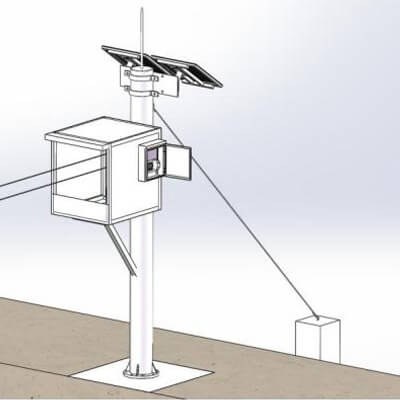
About flood monitoring system
Data collection
An effective flood monitoring system should be based on the real-time collection of local rainfall, river level, and flow data. This can be achieved by arranging corresponding liquid level sensors and rain gauge sensors. The operator can remotely grasp the water level and rainfall of the monitoring site, and can set a fixed water level or rainfall alarm value through the data platform. Once the rainfall in the area exceeds the alarm value, or the water level of the river exceeds the set water level, an alarm will be triggered and the staff will be notified via emails and text messages. The staff can analyze and take measures in time.
Data upload
Real-time data upload is the core of the flood monitoring system. The monitoring host of the system is responsible for data handling. It counts the data of each sensor every 2 seconds, collects these data, and uploads them to the user cloud platform through wireless transmission methods such as WIFI, Ethernet, 4G, or Lora. Therefore, when choosing a flood monitoring system, you should choose a monitoring host whose data transmission will not be interfered with by external signals. Even if there are multiple flood monitoring systems working at the same time nearby, they can ensure that they do not interfere with each other.
Data viewing and analysis
The data collected by the flood monitoring system is finally transmitted wirelessly to the free cloud platform or the customer’s own platform. Staff can not only view real-time data by logging in to the platform, but also set alarm values and check the working conditions of various sensors through the platform. Choose a platform that can log in on a computer and view data remotely through the mobile APP. In this way, the staff can grasp the data even when they are moving, and react in time.
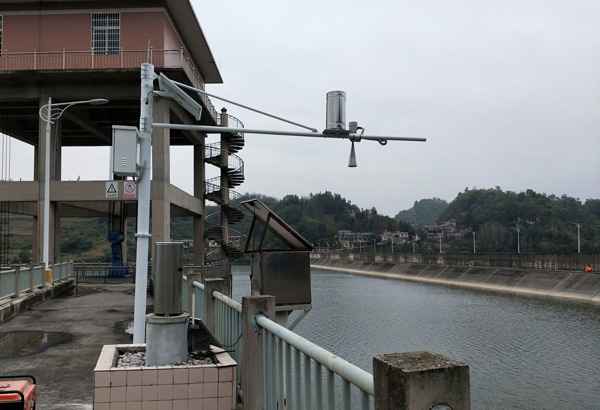
Renke flood monitoring system
Technological innovation and digital empowerment are effective ways to improve the level of flood and drought disaster prevention. To scientifically and effectively respond to changes in the natural environment, geological disasters, and flood disasters, Renke has independently developed a flood monitoring system in response to government requirements. The system consists of a data acquisition system, a solar power supply system, an all-weather protective box, a weather observation bracket, a video monitoring system, and an environmental monitoring platform. Through the deployment of sensor collection terminals, intelligent data collection and integrated uploading are realized, combined with the back-end environmental monitoring platform, the flood prevention and disaster reduction monitoring system is improved, analysis and judgment are strengthened, and warning information is released in time to provide comprehensive and comprehensive guarantee for its safe and stable operation.
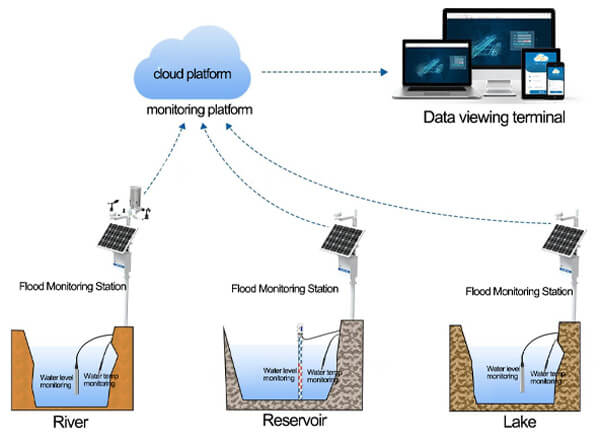
Among them, water level monitoring and rainfall monitoring are the key parts of the flood monitoring system. Through the monitoring of water level, total rainfall, instantaneous rainfall, daily rainfall, current rainfall and other data, it provides timely services for the integrated management of floods and water resources. In addition, it also supports a variety of environmental monitoring terminals such as temperature and humidity sensor, wind speed sensor, wind direction sensor, illuminance sensor, carbon dioxide sensor, and PM2.5 PM10 sensor.
The rain gauge consists of a funnel and a small container fixed on a tipping rod. Before the container is tipped, a certain amount of precipitation is collected, all the collected water is dumped and the electrical signal is sent to the data transmitter. Our tipping bucket rain gauge can read the day’s rainfall, instantaneous rainfall, yesterday’s rainfall, total rainfall, hourly rainfall, last hour’s rainfall, 24-hour maximum rainfall, 24-hour maximum rainfall period, 24-hour minimum rainfall, and 24-hour minimum rainfall period.
The liquid level sensor is a device used to measure the liquid level, which converts the height of the liquid level into an electrical signal for output. The measuring range can be customized, and it can work in rivers, lakes, and reservoirs for a long time.
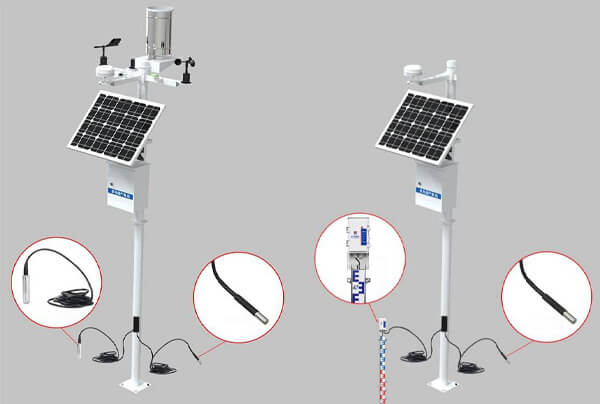
The whole system can be powered by solar energy, with large-capacity lead storage batteries, and can work continuously for seven days on rainy and cloudy days to ensure the normal operation of the equipment. At the same time, it supports wireless 4G signal or RS485 signal upload mode, which effectively reduces the overall cost of the system, improves system reliability, and is suitable for a variety of outdoor environments. The system is simple to install, easy to operate, without wiring, and effectively solves the construction problems of no electricity and no network cables in the field. The system design complies with national and industry standards and meets the needs of networking and sharing. It is widely used in hydrological departments for real-time monitoring of hydrological parameters such as rivers, lakes, reservoirs, channels, and groundwater.
Features of Renke Flood Monitoring System
1. Remote monitoring: The flood monitoring system can remotely view the temperature, humidity, rainfall, water level, water temperature, illuminance, wind speed, wind direction, and other monitoring data in the current environment and the operating status of the field equipment in real-time.
2. Real-time monitoring: The video image captured by the camera synchronizes data to the environmental monitoring platform through the video character overlay. Through video monitoring, the current water level, rainfall situation, and current environmental information can be monitored in real-time, which is convenient for remote control.
3. Over-limit alarm: When any monitored data exceeds the upper limit set by the administrator, the platform will send alarm information to the administrator in the form of SMS, phone, email, etc.
4. Historical data query and analysis: The flood monitoring system supports querying the historical data of one or more water and rain monitoring stations in the jurisdiction. Select the corresponding site, time range, and data type (hourly data, daily data, monthly data, quarterly data) according to your needs for query, support data comparison and analysis, and export historical data reports in PDF and Excel format.
5. Data storage: The weather monitoring host is used in the data acquisition system, with built-in data storage, which can store 520,000 records. When the communication fails, the device will automatically store it, and the stored data can be uploaded after the communication is restored.
6. Multiple terminal viewing: The system supports multiple methods such as computer PC and mobile phone clients to view data anytime and anywhere.
7. Large-screen visualization: Centralized scrolling display of environmental monitoring data of each monitoring point, real-time display of the dynamic curve of water level, rainfall, and other elements, the data is clear and intuitive, which is convenient for management personnel to view the system.

